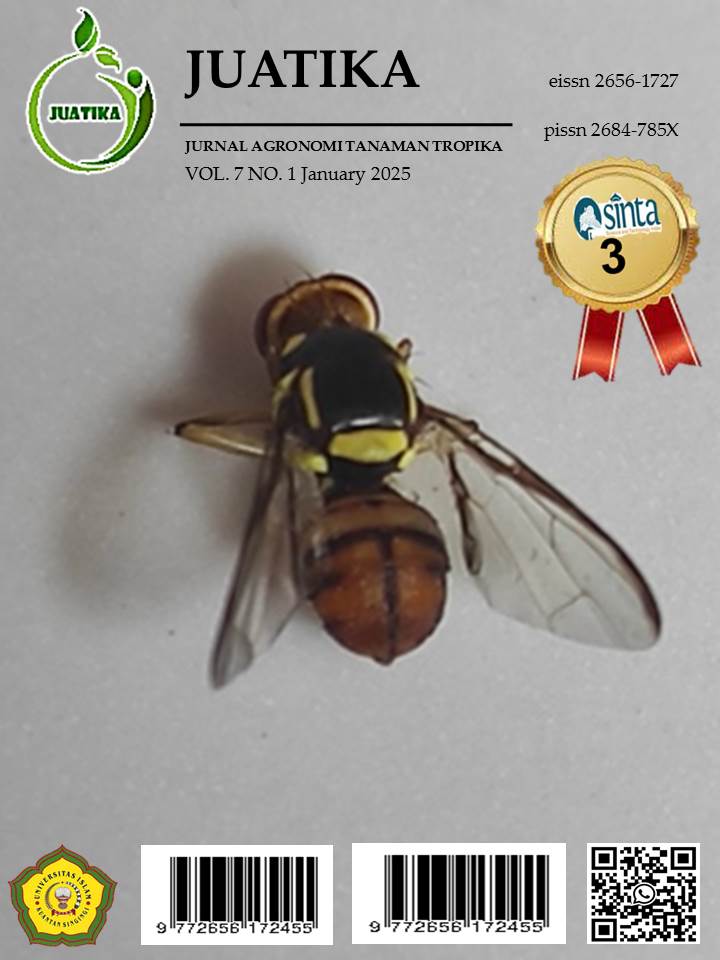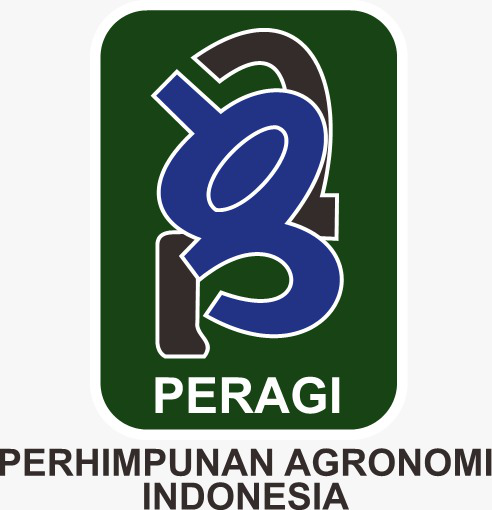Effectiveness of Corn (Zea mays ssp L. var. Saccharata) Seed Harvesting Speed Using a Mini Combine Harvester in Corn Seed Production
Abstract
Malaysia's animal feed production exceeds demand, accounting for about 45-65% of the composition of most feed products. In Malaysia, grain corn imports increased from approximately 2.5 million tonnes in 2000 to 4.0 million tonnes in 2019 for use as animal feed. This experiment was conducted at MARDI Seberang Perai, Penang, from June 2018 to the end of February 2020, using a Worldstar 7.0 PLUS (WS7.0PLUS) mini combine harvester. The basic operation of this mini combine harvester is similar to the Kubota mini combine harvester, which is widely used for paddy and grain corn harvesting. During the harvesting process, three methods were employed to test the speed of the mini combine harvester. Although this harvester is capable of harvesting four rows at once, considerations about potential plant losses necessitated harvesting only three rows for the purposes of this study. The harvester’s speed directly affected the loss rate and work efficiency, depending on the soil surface conditions in the test plot. Harvesting losses were categorized into two types: losses on the cutting table and losses during seed separation. Losses on the cutting table occurred in front of the harvester during the cutting process and were measured by collecting plants left in each row after the harvester passed. Losses during separation occurred when plant seeds fell behind the machine during the separation process, and these were measured by collecting samples using a 2 m x 2 m PVC quadrant placed behind the machine. The total losses due to the cutting table and separation system during harvesting using the mini combine harvester ranged from 2.45% to 6.43%. Each harvester speed produced varying results, significantly affecting the overall loss rate and efficiency of the operation.
Downloads
References
Fau, M. B., Rai, I. N., Wiraatmaja, I. W., & Mayadewi, N. N. A. (2024). Effect of soil water content and number of different host plants on AMF spore multiplication and corn plant growth.
Haitami, A., & Wahyudi. (2019). Utilization of sweet corn compost fertilizer in increasing corn (Zea mays ssp. L.) plant production on ultisol soil. Journal of Tropical Plant Agronomy (JUATIKA), 1(2), 42–48.
Kerawing, A. P., Suryanti, S., & Purwanti, S. (2024). Properties of rooting, growth, and yield of corn (Zea mays ssp. L.) at various watering intervals. Journal of Tropical Plant Agronomy (JUATIKA), 6(1), 72–79.
Listyarini, I., Suhaimee, S., Thamrin, M., & Gurning, R. N. (2024). Comparison of marketing strategies of Malaysian and Indonesian corn seeds. Agroplasma Journal, 11(1), 6–10.
Mohamad, B. A. Ghaffar, & Chan, C. S. (2019). Typical report on the potential of grain corn planting in Malaysia: MARDI experience. ISBN 978-967-936-672-3.
Nasution, T. S. R., Nazara, L. H., Harefa, A. M., Gulo, V., Zendrato, B. F., Waruwu, W., & Lase, N. K. (2024). Analysis of hybrid corn plant growth as animal feed in Olora Village, Gunungsitoli City. Habitat: Scientific Journal of Animal and Animal Husbandry Sciences, 2(2), 1–11.
Novita, A., Fadhillah, W., Susanti, R., & Lisdayani. (2021). Control of corn cob pests (Helicoverpa armigera Hubner) and stem borers (Spodoptera frugiferda) using entomopathogenic fungi on sweet corn plants in Banjaran Village, Deli Serdang. Journal of Agrotechnoscience, 5(2), 48–56.
Plumula: Scientific Periodical of Agrotechnology. (2022). Response of several sweet corn varieties to harvest yields in Hamparan Perak District, Deli Serdang Regency. Plumula: Scientific Periodical of Agrotechnology, 12(2), 77–86.
Sattar, M., Ali, M., Ali, L., Waqar, M. Q., Ali, M. A., & Khalid, L. (2020). Grain losses of wheat as affected by different harvesting and threshing techniques. International Journal of Research in Agriculture and Forestry, 2(6), 20–26.
Setiadi, G. M., Sule, M. I. S., & Setiawan, A. (2024). Analysis of the relationship between corn (Zea mays ssp. L.) plant productivity and soil chemical characteristics in Cibugel District, Sumedang Regency. Paspalum: Scientific Journal of Agriculture, 12(1), March.
Sholikah, A., Marwanti, S., & Ulfa, A. N. (2024). Factors influencing farmers' decisions in choosing corn commodities in Ngampon Village, Ampel District, Boyolali Regency. AGRISTA, 12(2), 13–27.
Tanveer Ahmad, Z., Ali, Z., & Mahmood, H. S. (2019). Factors causing low head rice recovery in combine-harvested paddy. Science, Technology and Development, 36(2), 84–90. https://doi.org/10.3923/std.2019.84.90
Widihastuty, W., Utami, S., Zikri, K. N., & Panjaitan, K. (2022). Response of several sweet corn varieties to harvest yields in Hamparan Perak District, Deli Serdang Regency.
Copyright (c) 2025 Elvina Yulianda Tarigan, Widihastuty, Adli Fikri Ahmad Sayu

This work is licensed under a Creative Commons Attribution 4.0 International License.
Authors who publish with Jurnal Agronomi Tanaman Tropika (JUATIKA) agree to the following terms:
Authors retain copyright and grant the Jurnal Agronomi Tanaman Tropika (JUATIKA) right of first publication with the work simultaneously licensed under a Creative Commons Attribution License (CC BY 4.0) that allows others to share (copy and redistribute the material in any medium or format) and adapt (remix, transform, and build upon the material for any purpose, even commercially) with an acknowledgment of the work's authorship and initial publication in Jurnal Agronomi Tanaman Tropika (JUATIKA).
Authors are able to enter into separate, additional contractual arrangements for the non-exclusive distribution of the journal's published version of the work (e.g., post it to an institutional repository or publish it in a book), with an acknowledgment of its initial publication in Jurnal Agronomi Tanaman Tropika (JUATIKA). Authors are permitted and encouraged to post their work online (e.g., in institutional repositories or on their website) prior to and during the submission process, as it can lead to productive exchanges, as well as earlier and greater citation of published work.







 More Information
More Information



